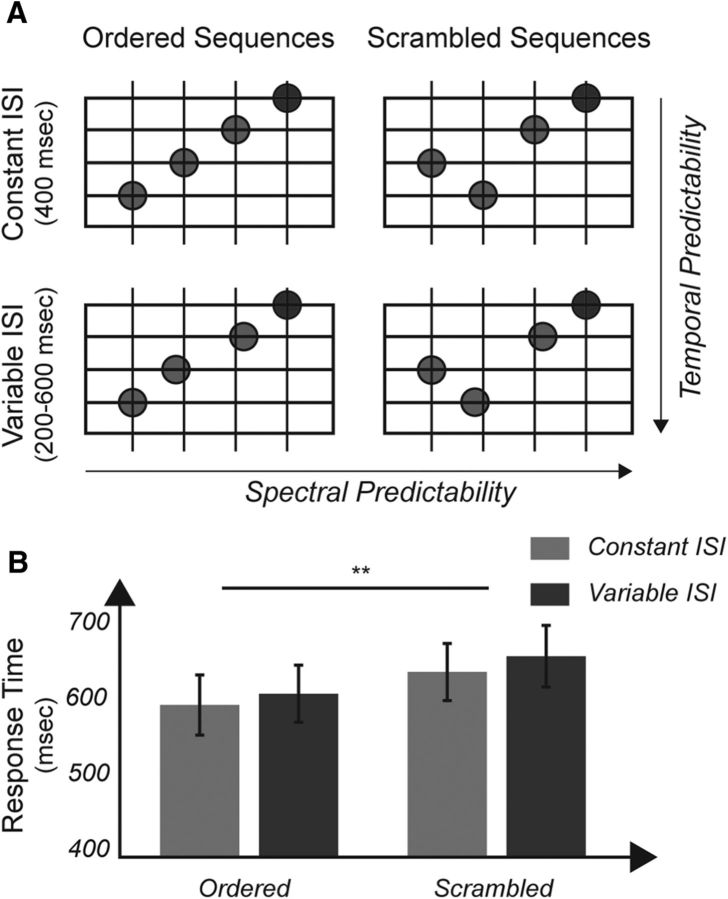Figure 1.
Sequences with regularity in both frequency and temporal domain are behaviorally most predictable. A, Sequences in the psychophysical paradigm. Frequency expectations were modulated by presenting tones in an orderly (left) or scrambled (right) way with the target frequency always remaining as the final, fourth tone (blue circle). Temporal expectations were manipulated by inserting either regular (top) or irregular (bottom) ISIs between tones. The target could either be the lowest or the highest frequency in the presented sequence and the participants' task was to distinguish between the two cases and indicate whether the target was the highest or the lowest tone as quickly as possible. B, Ordered sequences were associated with significantly faster reaction times (∼40 ms) than scrambled sequences (F(1,14) = 51.76, p = 3.031e−9). Temporally regular sequences produced, on average, 20 ms faster responses than sequences with irregular ISIs (F(1,14) = 3.60, p = 0.078). There was no interaction between spectral and temporal regularities (F(1,14) = 0.40, p = 0.54). Because ordered sequences with regular ISIs were responded to the fastest, we chose ascending and descending sequences with constant ISIs as stimuli for the neuroimaging experiment. **Significance below p < 0.01.

